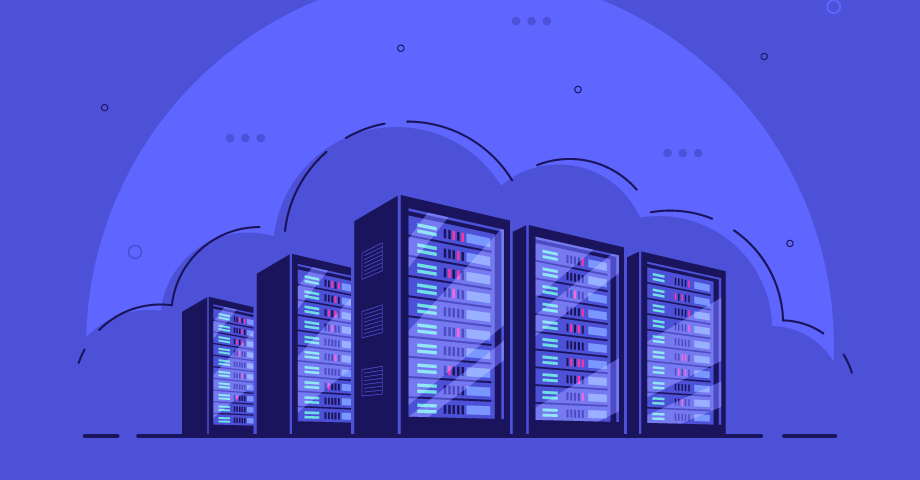Data center development has been the bright spot in a rather humdrum commercial real estate construction market. This year, data center development is on track for record-breaking activity with $170 billion secured for data center construction projects this year, according to research from JLL. By 2030, companies will invest $7 trillion globally in data center infrastructure, and CBRE says that 100+ Megawatt facilities have already become the norm. The growth has been tremendous, and it is all driven by a single market: AI.
AI requires a significant amount of computing power to operate. Simply asking an AI bot to say please and thank you uses tens of millions of dollars in processing power, and data centers harness all of that processing power. Data centers house the systems—rows upon rows upon rows of processors and chips—that make an AI bot able to answer your questions. Substantial data center development is necessary to support the rapid expansion of AI. And, it is rapid. Through 2030, the global AI market is expected to grow at a rate of more than 36% annually, reaching nearly $1.7 trillion in market size.
AI growth is no doubt tremendous—but it isn’t all boom. This year, amid fervent investment activity, concerns over an AI bubble began to emerge. Some commercial real estate developers have started to worry about the impact a bubble might have on data center performance. But, data centers remain a safe bet in the long-term with healthy demand-side fundamentals. Here is a closer look at prospective AI bubble and data center exposure.
The Emergence of an AI Bubble
Worry about the future profitability of AI began this summer when an MIT report found that 95% of corporate generative AI pilot programs did nothing to help the bottom line. Then, tech stocks began to fall. Nvidia, a leader in AI chip manufacturing, fell alongside Oracle, Advanced Micro Devices and Arm, calling into question the staggering valuations that came with years exuberant investing for these companies and AI in general.
Sam Altman, OpenAI CEO and AI guru, has admitted that AI is in a bubble akin to the dot-com bubble of the early 2000s, citing overexcited investment as the cause, not a fundamental problem with AI. “When bubbles happen, smart people get overexcited about a kernel of truth,” Altman said in an interview with The Verge. “If you look at most of the bubbles in history, like the tech bubble, there was a real thing. Tech was really important. The internet was a really big deal. People got overexcited.” In other words, there might be a temporary AI bubble due to exuberance about the technology, but the real value of AI and its future are not in question.
It isn’t only industry leaders that are concerned. In Bank of America Global Research’s monthly fund manager survey, 54% think that AI stocks are in a bubble, while 38% do not think a bubble exists. However, the concern is focused on the overvaluation of AI companies, not concern over the foundation of the AI industry, of which there is near unanimous positive consensus. Because data centers are supporting the future of the industry, they have downside protection against a near-term market correction.
Strong Data Center Performance Tells a Different Story
The New Yorker likened data center activity to the gold rush fever, where savvy proprietors of the time made their money selling picks and shovels to prospective miners. Data centers are the modern day pick. Afterall, you can’t run an AI company without a supportive computing warehouse.
And, tech companies are going all in on data centers as a result. This year, billions of dollars in structured finance issuance has been allocated to data center development. In the first four months of 2025 alone, there has been $9 billion in CMBS secured for new data center projects, but the numbers can run even higher. Pimco has issued $26 billion in bonds to Meta for data center expansion, Microsoft has $175 billion in lease commitments for data centers and OpenAI said it would invest “trillions of dollars” in building infrastructure for AI, including data centers.
Data center performance shows the demand is converting into real leases. The current 8MW construction pipeline is already 73% preleased with the vacancy rate for currently available space near 0%. Even if a prospective AI bubble popped, JLL says that current demand is so strong, the vacancy rate will likely remain in the 2% range through at least 2027. As a result of these strong fundamentals, the market is continuing to attract new capital, and data centers have seen an impressive market cap growth of 161%.
Balancing Technology and Profits
While the AI market could face near-term challenges, experts across the board are clear that AI is the future. The current climate is a growing pain as companies rapidly advance and capital gets excited about that advancement. In the long term, data centers will be required to support the future of AI, and near-term demand has been strong enough to ensure the market is stable for the next several years.
Despite the impressive performance of data centers, the prospective AI bubble shows that no sector is without risk. Developers need to stick to standard underwriting principals and thorough evaluation of demand in a respective market to ensure the investment is solid and to mitigate risk. Modern real estate development software can analyze market dynamics and demand trends to help developers reach targeted outcomes. Northspyre supports developers with predictive analytics tools, but goes further by providing automation and machine learning capabilities throughout project management to drive valuable efficiencies and maximize returns. Development is a high risk endeavor—whether you are part of the data center fervor or not. Technology support like Northspyre helps manage and mitigate new risks as they emerge.
Book a Northspyre demo and learn more about how the platform boosts project ROI with automation, analytics, and AI insights.



